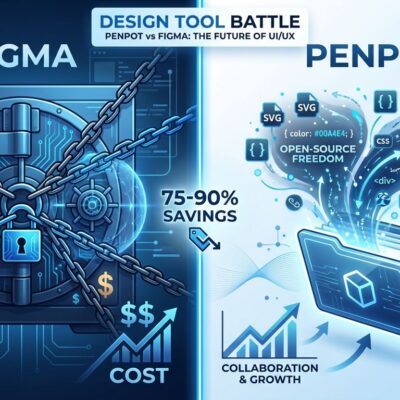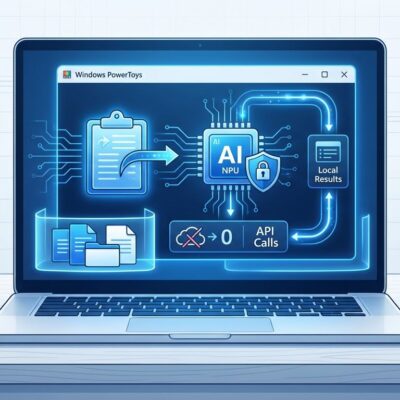
Google is killing ChromeOS after 14 years. The company revealed yesterday—via a LinkedIn job listing—that it’s building “Aluminium OS,” a new Android-based operating system to replace ChromeOS on laptops, tablets, and desktop PCs. The job posting, for a “Senior Product Manager, Android, Laptop and Tablets” based in Taiwan, describes Aluminium as “a new operating system built with Artificial Intelligence (AI) at the core.” Launch timeline: 2026, based on Android 17.
However, this isn’t a rebrand or incremental update. Google is fundamentally pivoting its desktop strategy from web-first to Android-first, consolidating two operating systems into one unified platform. For context: 93% of US school districts intend to purchase Chromebooks this year. Consequently, millions of students, teachers, and enterprise customers are about to find out what happens to their devices.
The Education Market Gamble
ChromeOS dominated education for over a decade. When Google launched Chromebooks in 2011, the pitch was simple: cheap, fast, web-based laptops for schools. By 2017, Chromebooks held 60% of the US classroom market, crushing Apple (down 33%) and Microsoft (down 21%). Today, 40 million Chromebooks sit in classrooms worldwide, and schools show no signs of slowing—93% of US districts plan to buy more in 2025.
So why kill a winning platform? Google’s job listing is explicit: the PM role requires “developing a strategy to transition Google from ChromeOS to Aluminium with business continuity.” Translation: ChromeOS is done, but Google can’t afford to alienate the education market. Both platforms will coexist during a transition period, but the endgame is clear—Android everywhere.
The risk here is enormous. Schools invested billions in ChromeOS infrastructure. If the migration stumbles—compatibility issues, app gaps, training costs—districts will look elsewhere. Windows and macOS are ready alternatives. Google gets one shot at this.
Google Aluminium OS: Platform Consolidation Strategy
Google has been running two mobile operating systems for years: Android for phones and tablets, ChromeOS for laptops. Maintaining separate codebases, app ecosystems, and developer tools is expensive and inefficient. Aluminium OS ends that fragmentation.
Built on Android 16’s Desktop Mode—which itself is based on Samsung DeX foundations—Aluminium will support three market tiers: “AL Entry” (budget devices), “AL Mass Premium” (mid-range), and “AL Premium” (high-end). Form factors include laptops, tablets, detachables, and even desktop “boxes” (think Chromebox, but Android). The goal: compete with Windows and macOS across the entire market spectrum, not just budget education devices.
Meanwhile, for developers, the shift is significant. ChromeOS prioritized web apps, with Android app support retrofitted later. Aluminium flips that model—Android apps become first-class citizens, and the Play Store replaces the Chrome Web Store as the primary distribution channel. One codebase now works across phones, tablets, and PCs. That’s a compelling pitch, assuming desktop windowing doesn’t feel like a stretched phone interface.
AI at the Core: Gemini-Powered Desktops
Google’s AI strategy is the real differentiator here. The job listing emphasizes that Aluminium is “built with Artificial Intelligence (AI) at the core”—not bolted on, but foundational. Rick Osterloh, Google’s SVP of Platforms and Devices, confirmed the company’s focus: “Bringing Gemini models, bringing the assistant, bringing all of our applications to PCs.”
This puts Aluminium in direct competition with Microsoft’s Copilot+ PCs and Apple’s Intelligence features. Microsoft’s ARM-based AI PCs are struggling—ARM Copilot+ devices made up less than 10% of shipments in Q3 2024, despite aggressive marketing. Google has an advantage here: Android has run on ARM processors for over a decade, while Windows is still wrestling with app compatibility.
The hardware side comes from Qualcomm. At Snapdragon Summit 2025, Google and Qualcomm announced a partnership to “build a new platform that converges mobile and desktop computing, leveraging recent advancements in AI.” Aluminium will run on Qualcomm’s Snapdragon X Elite processors—the same chips powering Windows Copilot+ PCs. Qualcomm’s CEO called the experience “incredible,” though we’ll see if that enthusiasm holds when devices ship.
The Skepticism Problem
Android on desktop isn’t new, and previous attempts haven’t inspired confidence. Samsung’s DeX mode launched in 2017, offering a desktop experience when Galaxy phones connected to monitors. It’s niche at best. Google itself has experimented with desktop UI elements since Android Nougat in 2016, with limited success. Android’s desktop offering has been “extremely lacking” until the recent Android 16 Desktop Mode—which Aluminium is built on.
Hacker News discussions about Aluminium have been lukewarm (14 comments, 18 points). The community’s seen this movie before: Google announces a bold platform shift, generates hype, then execution falters. Remember Google Plus? Wave? Allo? ChromeOS itself was mocked when it launched—”just a browser” critics said—but Google eventually proved them wrong by dominating education. Can it do that twice?
Aluminium’s 2026 launch gives Google time to refine desktop windowing, but the education market won’t wait forever. If migration tools are clunky, app compatibility is spotty, or teachers face retraining headaches, schools will consider alternatives. Microsoft would love to reclaim the classroom, and Apple’s not out of the game. Google’s betting its desktop future on Android. The stakes couldn’t be higher.








